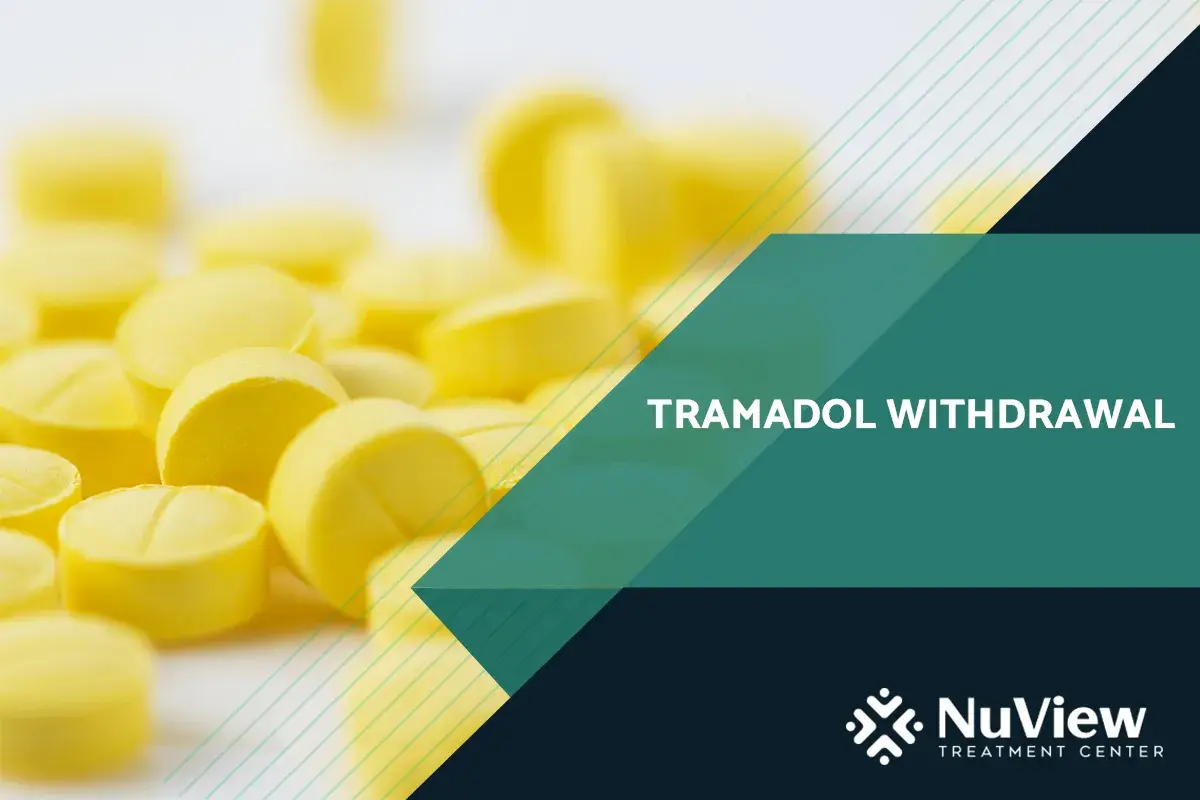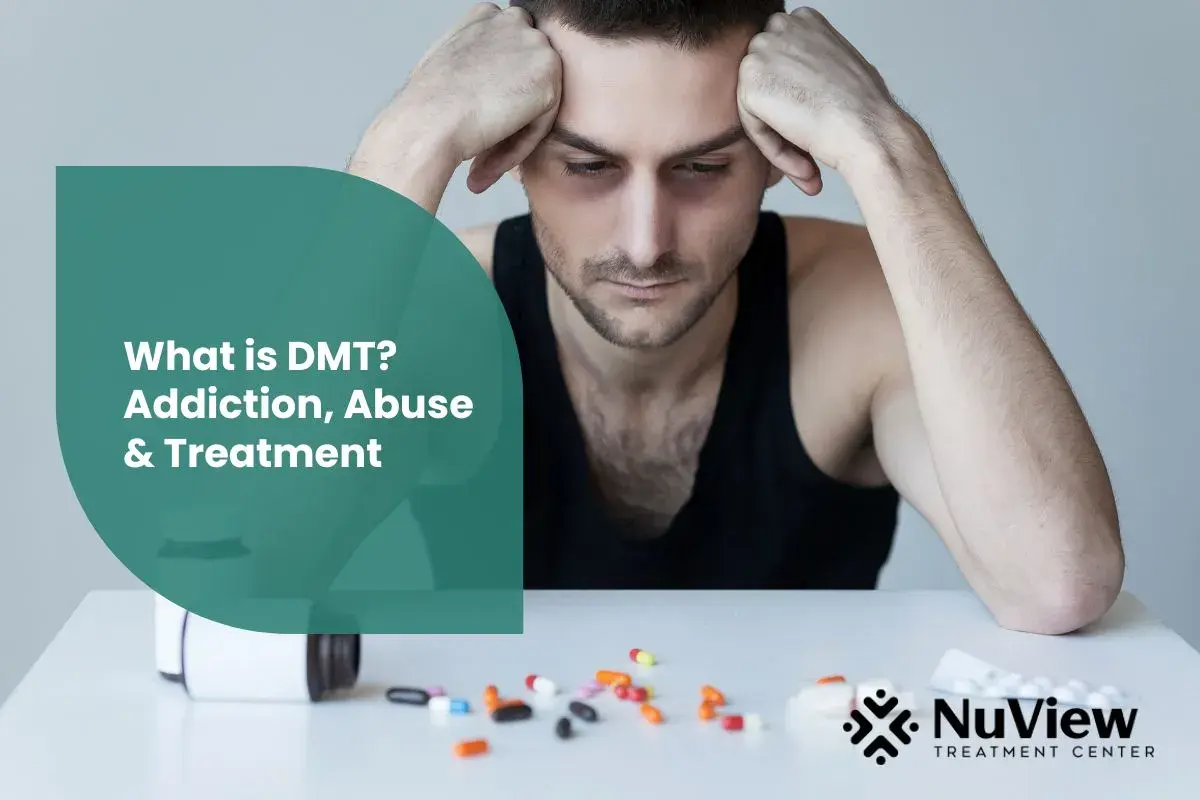What is Tramadol and Why is Withdrawal a Concern?
Withdrawal is a concern because tramadol affects both opioid and neurotransmitter systems, causing symptoms like anxiety, nausea, cravings, depression, and mood swings. These symptoms can be challenging to manage without proper medical supervision, making a gradual taper or professional guidance crucial for a safe recovery.
Understanding Tramadol Withdrawal
Get Started With Nuview Treatment Center
Our dedicated professional staff is here to guide you or your loved one on the journey to lasting recovery, offering support every step of the way.
Psychological Symptoms
Below are the Psychological Symptoms:
- Anxiety: Heightened worry, restlessness, and possible panic attacks.
- Depression: Persistent sadness, hopelessness, and lack of motivation.
- Irritability: Increased frustration and emotional sensitivity.
- Mood Swings: Sudden shifts in mood, such as sadness or anger.
- Cravings: Intense desire to use tramadol.
- Insomnia: Difficulty falling asleep or staying asleep.
- Cognitive Impairment: Trouble concentrating or focusing.
- Guilt/Shame: Feelings of remorse about drug use.
- Restlessness: Difficulty sitting still or relaxing.
Timeline of Tramadol Withdrawal
The timeline of tramadol withdrawal can vary depending on factors like dosage, duration of use, individual health, and whether the individual tapers or stops abruptly. Here's a general overview of the tramadol withdrawal timeline:
1. First 6-12 Hours After Last Dose
- Initial onset: Withdrawal symptoms may begin within 6-12 hours after the last dose, especially for those taking tramadol regularly. Early symptoms include:
- Anxiety
- Restlessness
- Irritability
- Mild sweating
2. Days 1-3 (Acute Withdrawal)
- Peak symptoms: This period marks the peak of withdrawal symptoms, and they can be intense. Common symptoms include:
- Nausea and vomiting
- Diarrhea
- Muscle aches
- Sweating
- Chills
- Insomnia
- Headaches
- Mood swings (depression, irritability, anxiety)
- Cravings for tramadol
- Other symptoms: Some people experience flu-like symptoms, such as fever or body aches, during this phase.
3. Days 4-7
- Gradual improvement: Physical symptoms begin to subside after about 3-5 days. However, some symptoms may persist, such as:
- Fatigue
- Mood disturbances (depression or anxiety)
- Insomnia or poor sleep quality
- Low appetite
- Cravings may still be present but tend to decrease in intensity as the body adjusts.
4. Days 7-14
- Physical recovery: Most of the physical symptoms, such as nausea, muscle aches, and sweating, are significantly reduced or resolved. However, some individuals may still experience:
- Mild muscle pain
- Sleep disturbances
- Mood swings or depression
- Fatigue
5. Weeks 3-4
- Psychological symptoms: Emotional symptoms, such as anxiety, depression, and mood swings, can persist for weeks after physical symptoms have subsided. The body and brain are still adjusting to the absence of tramadol, and some individuals may experience:
- Persistent insomnia
- Low energy
- Ongoing cravings (mild to moderate)
- Emotional regulation: This is a critical phase where individuals should focus on emotional support, therapy, and managing psychological effects.
6. Months 1-3 (Post-Acute Withdrawal)
- Post-Acute Withdrawal Syndrome (PAWS): Some individuals may experience long-lasting psychological symptoms, also known as PAWS. These can persist for weeks or months and include:
- Anxiety and depression
- Sleep disturbances or insomnia
- Low motivation
- Irritability
- Difficulty concentrating
- Support and coping: Therapy, support groups, and medication-assisted treatment can help individuals manage these lingering symptoms.
Long-Term Recovery
- After 3 months and beyond: By this stage, most withdrawal symptoms should have subsided. However, psychological cravings and mood disturbances may continue for some individuals, and long-term support is recommended to prevent relapse.
The withdrawal process can be uncomfortable, but with the right support—such as tapering, medical assistance, and therapy—it can be managed safely and effectively
Get Started With Nuview Treatment Center
How to Manage Tramadol Withdrawal Safely
Managing tramadol withdrawal safely involves a structured approach that minimizes discomfort and reduces the risk of relapse. Here are key strategies to ensure a safe withdrawal process:
1. Consult a Healthcare Professional
- Medical guidance: Always consult a doctor before beginning the withdrawal process. A healthcare provider can assess your situation and recommend a tapering schedule or other supportive measures based on your usage.
- Tapering off: Gradually reducing tramadol dosage under medical supervision is much safer than quitting "cold turkey." A tapering plan can help reduce the severity of withdrawal symptoms.
2. Medication-Assisted Treatment (MAT)
- Symptom management: In some cases, medications such as clonidine, gabapentin, or anti-nausea medications may be prescribed to alleviate withdrawal symptoms like anxiety, agitation, or nausea.
- Craving reduction: Medications like buprenorphine or naltrexone may be used to help manage cravings and reduce the risk of relapse.
3. Hydration and Nutrition
- Stay hydrated: Withdrawal can cause dehydration due to symptoms like sweating, vomiting, or diarrhea. Drinking plenty of fluids, especially water and electrolyte-rich drinks, is essential.
- Healthy diet: Eating nutritious foods can help support the body’s recovery process, replenishing lost nutrients and maintaining energy levels.
4. Adequate Rest and Sleep
- Promote relaxation: Withdrawal can disrupt sleep patterns. Practice good sleep hygiene by creating a calming bedtime routine, avoiding caffeine, and using relaxation techniques like deep breathing or meditation.
- Sleep aids: If necessary, consult your healthcare provider about short-term use of non-addictive sleep aids.
5. Emotional Support and Counseling
- Therapy and counseling: Cognitive Behavioral Therapy (CBT) or Dialectical Behavioral Therapy (DBT) can help manage anxiety, depression, or emotional struggles that arise during withdrawal.
- Support groups: Peer support groups like Narcotics Anonymous (NA) or SMART Recovery provide emotional support, shared experiences, and accountability, which can be crucial during withdrawal and recovery.
6. Physical Activity
- Exercise: Light to moderate exercise, such as walking, stretching, or yoga, can help reduce withdrawal symptoms by releasing endorphins and improving mood.
- Active routine: Incorporating regular physical activity into your daily routine can improve energy levels and mental health.
7. Managing Psychological Symptoms
- Mindfulness and relaxation: Stress and anxiety during withdrawal can be managed through mindfulness, meditation, and breathing exercises. Apps and guided videos can be helpful for beginners.
- Distraction techniques: Engaging in hobbies, reading, or spending time with supportive friends and family can help take your mind off symptoms and prevent relapse triggers.
8. Create a Safe Environment
- Remove triggers: Eliminate any substances or paraphernalia that could trigger a relapse. Inform close friends or family members of your withdrawal plans to create accountability.
- Develop a relapse prevention plan: Work with a counselor or therapist to create strategies for coping with cravings, triggers, or stressful situations that might lead to relapse.
9. Consider Outpatient Care
- Structured support: If withdrawal symptoms are challenging to manage at home, consider an outpatient program. These programs offer therapy, medical monitoring, and support while allowing you to maintain daily responsibilities.
10. Plan for Long-Term Recovery
- Ongoing treatment: Withdrawal is only the first step. Develop a long-term treatment plan that includes therapy, lifestyle changes, and regular check-ins with healthcare providers to maintain sobriety and mental health.
Managing tramadol withdrawal safely requires a combination of medical support, emotional care, and lifestyle adjustments. By following a structured plan and seeking help when necessary, the withdrawal process can be much more manageable and reduce the risk of relapse.
Treatment Options After Tramadol Withdrawal
After tramadol withdrawal, treatment options focus on addressing both the physical and psychological aspects of recovery. Here's a brief overview of effective treatment options:
1. Outpatient Treatment
- Flexible support: Outpatient programs offer therapy, counseling, and education while allowing individuals to continue their daily routines. Ideal for those with a supportive home environment.
- Customized care: Treatment plans may include individual therapy, group sessions, and family involvement to address the psychological aspects of recovery.
2. Behavioral Therapies
- Cognitive Behavioral Therapy (CBT): Helps individuals recognize triggers, change negative thinking patterns, and develop healthy coping mechanisms to avoid relapse.
- Dialectical Behavioral Therapy (DBT): Focuses on emotional regulation and developing resilience, particularly helpful for those with co-occurring emotional difficulties.
3. Support Groups
- 12-Step Programs (e.g., Narcotics Anonymous): Peer support and shared experiences can foster a sense of community and accountability during recovery.
- Non-12-Step Groups: Options like SMART Recovery offer a self-empowering approach with structured tools for maintaining long-term sobriety.
4. Medication-Assisted Treatment (MAT)
- Craving management: Medications such as buprenorphine or naltrexone can help reduce cravings and prevent relapse when combined with counseling or therapy.
- Long-term support: MAT can be particularly beneficial for those experiencing ongoing cravings or withdrawal symptoms.
5. Mental Health Treatment for Co-Occurring Disorders
- Integrated care: Those with mental health issues such as anxiety or depression may benefit from simultaneous treatment, which can improve overall outcomes by addressing both the substance use and the mental health condition.
6. Holistic Therapies
- Mind-body approaches: Mindfulness, yoga, meditation, and other holistic treatments can support emotional well-being and reduce stress, aiding in the recovery process.
- Nutrition and wellness: Focusing on a healthy diet and exercise can also promote physical recovery and emotional stability.
7. Aftercare and Relapse Prevention
- Continued support: Ongoing therapy, regular check-ins, and involvement in peer support groups help maintain sobriety. Developing a structured relapse prevention plan can significantly reduce the risk of returning to substance use.
This approach focuses on flexibility and long-term management, supporting recovery through a combination of therapy, support systems, and holistic care.
Frequently Asked Questions:
What are the symptoms of Tramadol withdrawal?
Common symptoms include muscle aches, sweating, nausea, anxiety, irritability, depression, and intense cravings for Tramadol.
How long does Tramadol withdrawal last?
The withdrawal timeline typically lasts from a few days to a couple of weeks, with the most intense symptoms occurring within the first 2-5 days.
Can I detox from Tramadol at home?
Detoxing from Tramadol at home can be risky due to potential complications. It is safer to undergo detox under medical supervision to manage symptoms effectively.
How is Tramadol withdrawal treated?
Treatment includes symptom management with medications, and therapy to address the psychological effects of withdrawal and long-term recovery support.
Why is Tramadol withdrawal different from other opioid withdrawals?
Tramadol has a unique action on serotonin and norepinephrine, which can cause additional symptoms like mood swings and anxiety, making the withdrawal process more complex.
- What is Tramadol and Why is Withdrawal a Concern?
- Understanding Tramadol Withdrawal
- Psychological Symptoms
- Timeline of Tramadol Withdrawal
- How to Manage Tramadol Withdrawal Safely
- Treatment Options After Tramadol Withdrawal
- Frequently Asked Questions:
- What is Tramadol and Why is Withdrawal a Concern?
- Understanding Tramadol Withdrawal
- Psychological Symptoms
- Timeline of Tramadol Withdrawal
- How to Manage Tramadol Withdrawal Safely
- Treatment Options After Tramadol Withdrawal
- Frequently Asked Questions:
Get Help Today!
Everyone is Welcome Here and We All Have Your Back
Your healing journey deserves a personalized approach. At NuView, we integrate expertise in behavioral therapy, mental health, and substance use treatment to create a customized recovery plan tailored to your unique needs.
Connect with our Admissions Specialists today.







Written By
Dr. Ryan Peterson